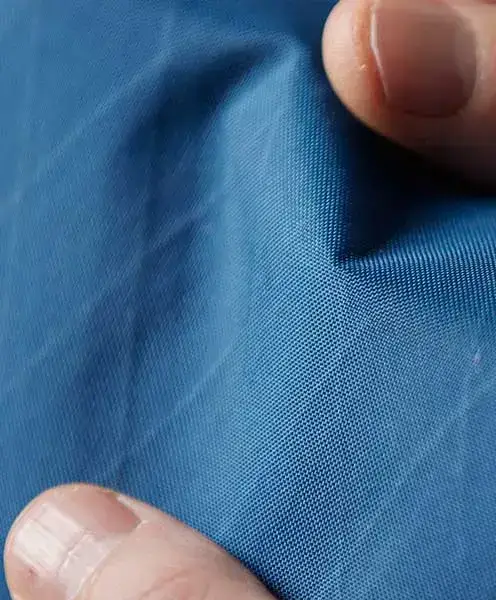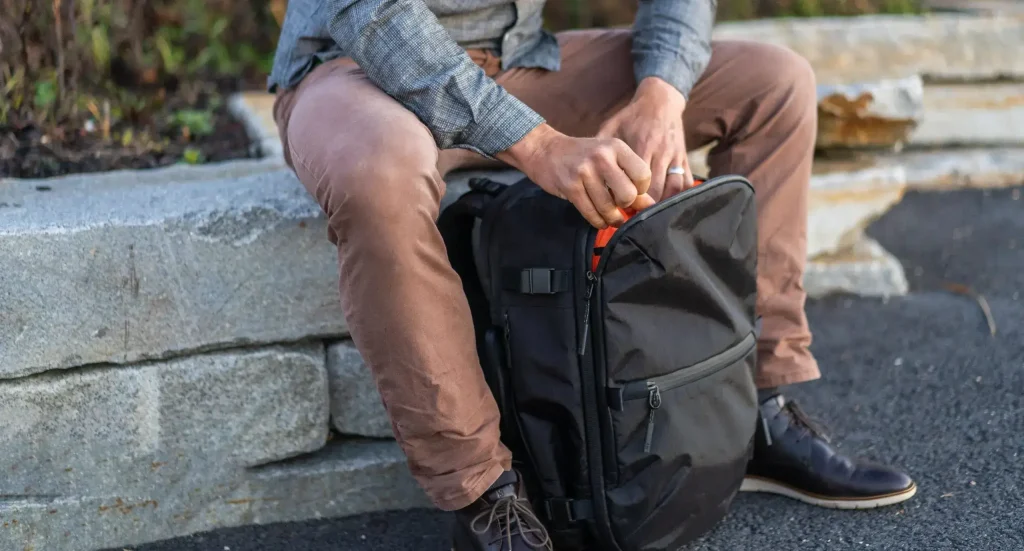In tactical gear, material choice is critical for performance, reliability, and user comfort. Professionals in the military, law enforcement, and outdoor industries need gear that is durable, lightweight, and suited for demanding environments. X-PAC fabric has become a popular choice for tactical gear manufacturers due to its unique construction and versatility.
This guide explores X-PAC fabric’s composition, benefits, and applications.
What is X-PAC Fabric?
Ύφασμα X-PAC is a high-performance laminated material originally developed by Dimension-Polyant, a company renowned for its sailcloth technology.
While it was first used in sailing to endure saltwater, UV exposure, and high winds, its excellent durability quickly caught the attention of tactical gear manufacturers.
Today, X-PAC is a go-to fabric for σακίδια πλάτης, τακτικά γιλέκα, σακουλάκια, and outdoor gear.

Key Components of X-PAC Fabric
X-PAC’s performance comes from its engineered layers:
- Face Fabric (Outer Layer):
Typically nylon (e.g., 210D, 420D) or polyester, treated for abrasion and UV resistance to handle scratches, scuffs, and prolonged sun exposure.
The standout feature of X-PAC fabric is its cross-ply (X-ply) layer. This grid of 45-degree diagonal fibers (often made of Vectran or polyester) is laminated into the fabric. The diagonal orientation distributes stress evenly, preventing tears and stretching. Think of it like rebar in concrete—it adds structural integrity.
A polyethylene terephthalate (PET) layer provides waterproofing. Unlike coatings that wear off, this bonded film is permanent and ensures long-lasting protection without breathability.
A lightweight polyester layer protects gear contents and provides a smooth surface for user comfort.

Why X-PAC Fabric Stands Out
X-PAC offers distinct advantages over other tactical fabrics like Cordura and Ripstop Nylon. Here’s how it compares:
X-PAC’s X-Ply reinforcement provides higher tear resistance compared to fabrics of similar weight. For example:
X-PAC VX21 (210D nylon face) weighs ~5.9 oz/yd² and offers tear resistance comparable to heavier 1000D Cordura (~10 oz/yd²).
Ripstop Nylon (70D) at ~1.9 oz/yd² is lighter but less durable for heavy-duty applications.
Most Cordura and ripstop nylon rely on coatings (like DWR) that degrade over time. X-PAC’s bonded waterproof film ensures long-lasting protection without delamination.
The X-ply layer prevents the fabric from stretching or warping under load, a common issue with nylon-based fabrics. This is critical for gear like plate carriers or backpacks that must retain their shape.
X-PAC is available in multiple variants to suit different needs:
| X-PAC Variant | Face Fabric | Weight (oz/yd²) | Καλύτερα για |
| VX21 | 210D nylon | 5.9 | Backpacks, pouches |
| VX42 | 420D nylon | 7.5 | Tactical vests, heavy-duty use |
| RX30 | 300D polyester | 5.5 | Lightweight gear, outerwear |
| RX40 | 400D polyester | 6.2 | Abrasion-prone environments |
(Source: Dimension-Polyant X-PAC Technical Guide)
Applications of X-PAC in Tactical Gear
Στρατός & επιβολή του νόμου
- Μεταφορείς πλακών: X-PAC’s dimensional stability ensures armor plates stay securely positioned during intense movement.
- Duty Belts: The fabric’s rigidity prevents sagging, while its abrasion resistance handles constant friction from holsters and tools.
- Medical Bags: Waterproofing and durability protect sensitive equipment in field conditions.
Outdoor & Survival Gear
- Σακίδια πλάτης: Brands like Hyperlite Mountain Gear use X-PAC for lightweight, waterproof packs suited for alpine or jungle environments.
- Shelters: Tents and tarps made with X-PAC resist UV damage and rain.
Καθημερινή μεταφορά (EDC)
- Pouches & Organizers: X-PAC’s smooth inner liner protects knives, flashlights, and electronics from scratches, while the outer layer withstands daily wear.
The Science Behind X-PAC’s Durability
- Bias Orientation of Fibers
The 45-degree X-ply layer mimics the natural direction of stress forces. When pressure is applied, the diagonal fibers absorb and redistribute energy, preventing tears from propagating. This gives X-PAC an edge over straight-thread fabrics like Cordura in puncture and tear tests.
X-PAC is manufactured using heat-activated adhesives to bond layers. This creates a permanent seal that won’t peel, even after prolonged use. Laminated seams are stronger and more watertight than stitched seams, reducing weak points.
Caring for X-PAC Gear: Dos and Don’ts
To maximize the lifespan of X-PAC gear:
- Do: Clean with a mild soap and lukewarm water. Use a soft brush for stubborn dirt.
- Do: Store in a dry, ventilated area to prevent mildew.
- Don’t: Machine-wash or dry-clean, as agitation can weaken laminates.
- Don’t: Expose to direct heat (e.g., radiators), which may delaminate layers.
For repairs, use Tenacious Tape or X-PAC-specific repair kits to patch small tears.
Debunking Myths About X-PAC Fabric
- Myth 1: “X-PAC is too stiff.”
While heavier variants (e.g., VX42) are rigid, lighter versions like RX30 offer flexibility for roll-top bags or apparel.
- Myth 2: “X-PAC is only for premium gear.”
X-PAC’s durability reduces long-term replacement costs, making it cost-effective for both high-end and mid-range gear.
Partner With Us for Custom Tactical Gear
Στο LQ ΣΤΡΑΤΟΣ, our ISO 9001-certified team specializes in crafting tactical gear with X-PAC and other high-performance materials. We have years of experience in creating durable, functional, and customizable gear tailored to your specific needs.
Whether you need a custom backpack, tactical vest, or any other gear, we can produce it using designated fabric to ensure it meets the highest standards of performance and durability.
Learn more about our process or request a quote today.


